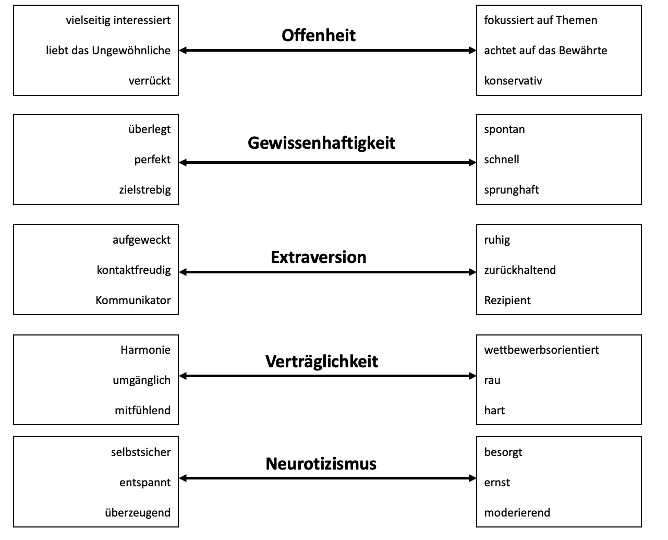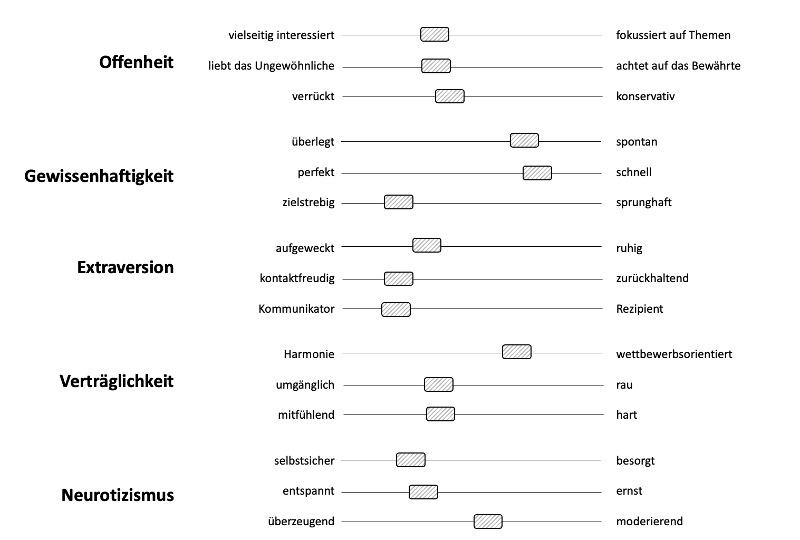Agility is a mindset and is primarily based on character. But what does such a character look like and how can I make something tangible? I’ve been asking myself that for a long time and I wanted to know: How can I make this agile mindset tangible for managers and me and work on the vague theme of agility and character.
I believe that agility, especially in management, depends on a person’s character. You either have or don’t have this agile mindset – I think. So there is a specific character or character image that is considered agile or at least that people see the theory of agility represented. In this article I would like to first show how a character can be described and then show from conversations with managers what a character that is considered “agile” looks like.
Description of a character
Authentic management is described as a mindset, behavior or personal attitude. For this reason, managers are often concerned with the character that should be decisive for success. A character can be described using the Big Five (also known as the five-factor model). The Big Five model is now regarded as a kind of standard for describing personalities and has been used in over 3,000 scientific studies over the past twenty years (John et al. 2008). In the following figure 1 the model is roughly shown and three examples per high and low factor value are presented for each of its dimensions. Each dimension is briefly explained for a better understanding:
- Openness: The willingness to deal with new issues with an open mind
- Conscientiousness: self-control and accuracy of a person
- Extraversion: attitude in dealing with other people
- Compatibility: The adaptation and ability to understand other people.
- Neuroticism: Emotional and psychological strength of a person

SURVEY ON THE CHARACTER OF A TOP MANAGER
The question now arises as to what the character of a top manager could look like and which characteristics are relevant for authentic management. I evaluated the Big Five model through a survey on the blog and in personal conversations with top managers from my environment. The managers from my environment were as follows:
- 4 x managers with 50-99 employees,
- 9 x managers with 100–249 employees,
- 3 x managers with 250–499 employees and
- 4 x managers with over 500 employees.
The study is not strictly academic but was carried out by me out of pleasure and interest. But I tried to make sure that it was executed properly as far as possible. I showed managers 15 sliders – 3 per category of the framework. The sliders should be weighted between two opposing values, e.g. speed / perfection. The mean values of the respective answers and characteristics of the character can be found as a model in the following figure 2. The manager’s task was to define a target image that you would see as an authentic and good character of a manager.

The model shows a model for the character of a manager. The mission statement can serve as an orientation for current top managers. In the following, the results are explained in more detail and compared with current top managers as examples. The comparisons are based on reports from current media and serve as an example.
openness
The first dimension is openness: According to the test subjects, a top manager should be interested in many things and open to the unusual. Furthermore, there should be a slight tendency towards a positively crazy character. Especially managerial types like Elon Musk (Tesla) and Steve Jobs (Apple) underline these character traits and were often described by the media as “positively crazy”. In particular, initially incomprehensible visions such as the iPhone or the trip to the moon or flying taxis shaped this picture.
conscientiousness
The second dimension is conscientiousness. According to the top managers surveyed, managers shouldn’t be particularly conscientious. Above all, spontaneity and speed are more relevant than perfection and considered behavior. However, it is important to the respondents that there is a high level of determination. Here in particular, managers from start-ups such as Valentin Stalf (N26) and Dominik Richter (HelloFresh) underline these values. N26 and HelloFresh in particular showed great growth. According to both founders, speed and the spontaneous reaction to change were particularly important characteristics.
Extraversion
The third dimension includes extraversion. A manager should be bright, very sociable, and a good communicator. The aforementioned managers Jürgen Klopp and Dieter Zetsche show this behavior in particular. During the transformation of Daimler, Zetsche in particular had communicated numerous messages to relevant newspapers and made contact with employees. Jürgen Klopp also stands for open and clear communication that is perceived by the media as authentic.
compatibility
Compatibility is the fourth dimension. In general, the top managers surveyed describe the character as sociable and compassionate. Only the value harmony was not essential for the respondents, but a high degree of competitive orientation in the decisions. Especially Janina Kugel (ex-Siemens) and Anna Alex (Outfittery) should be mentioned here. Janina Kugel in particular shows herself to be particularly compassionate through statements about the improvement of working conditions in the course of flexible home office models and attached great importance to harmony within the group.
Neuroticism
The last dimension is neuroticism. According to respondents, a manager should be confident and relaxed. Furthermore, this should be more moderating than convincing. Especially Daniel Kraus (Flixbus) and Raffael Johnen (Auxmoney) should be mentioned here. Both founders show in media and keynotes that they keep a confident appearance.
CONCLUSION
Overall, according to the model, a top manager should show a certain openness and a low level of conscientiousness, but a high degree of extraversion. A top manager is therefore a good communicator, very bright and sociable. He pays little attention to details and is a confident and relaxed person. The conclusion shows that, according to my data set, the idea of one’s own behavior / character is strongly based on that of top managers from the media.
Read on to learn how to change your character based on properties!
[werbung]swell
John, O., Laura, P. & Soto, C. (2008). Paradigm Shift to the Integrative Big Five Trait Taxonomy. Handbook of Personality Theory and Research. 3rd Edition. Pp. 114-117
[fotolia]


